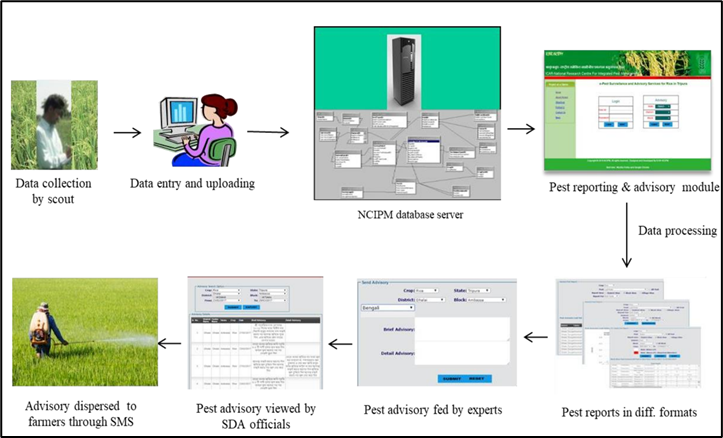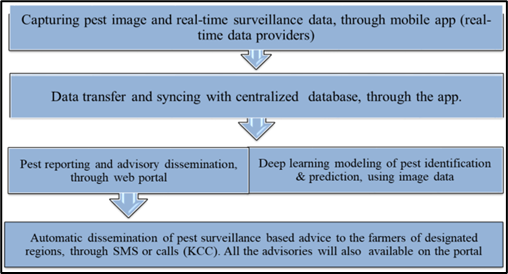Why in News?
The Union Government launched the AI-based National Pest Surveillance System (NPSS) that will help farmers to connect with agriculture scientists and experts on controlling pests using their phone.
What’s in Today’s Article?
- About NPSS (Objective, Structure, Working, Proposed Outcome, etc.)
About National Pest Surveillance System:
- On August 15, the Indian Government launched the National Pest Surveillance System (NPSS), an AI-based platform designed to help farmers connect with agricultural scientists and experts to manage pest control.
- This initiative aims to reduce farmers' reliance on pesticide retailers and promote a scientific approach to pest management.
- Key aspects of the NPSS include:
- Use of AI tools to analyse pest data for effective control and management.
- Enabling farmers to capture and send images of infested crops or pests to experts via the platform for accurate diagnosis and treatment.
- Enhancing the connection between scientists and approximately 14 crore farmers across the country.
- The system will benefit farmers by providing timely information on pest attacks, thereby increasing productivity and conserving soil health.
- It requires no additional funding and will be implemented at the state level through outreach programs.
Structure of NPSS:

Working of NPSS:

Proposed Outcome:
- A National System of Pest Surveillance to provide easy and timely access to expert support for pest identification and pest surveillance-based pest management advice to farmers of the country.
- This will not only assist in avoidance of pest epidemics but will also help in minimizing the crop loss due to pests with the real data submission by Government, resources & lead farmers.
- Moreover, a repository of national pest scenario will also be available to various public agencies, working in the field of plant protection to identify the pest hotspots and thus to formulate plant protection policies.









